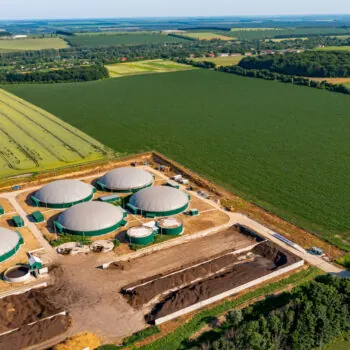In the ongoing negotiations on the post-2020 Connecting Europe Facility, the Parliament is calling for the re-opening the “TEN-E” regulation – a legislation approved in 2013 and which still sets the infrastructure priorities for the EU. This blog aims at clarifying why this is an important opportunity not to be missed.
Why does it matter?
The European Commission published its latest thorough assessment of the European Union’s energy infrastructure needs for the period up to 2020 and beyond in 2011, in its communication “A Blueprint for an integrated European energy network”. This assessment has since been used to determine how cross-border energy infrastructure is selected, prioritised, and funded:
> It has been used to develop the Trans-European Networks for Energy (TEN-E) regulation, adopted in 2013, which introduces a process to select Projects of Common Interest (PCI) that can plug future gaps between EU energy demand and supply.
> Only projects selected through this process can be funded by the current Connecting Europe Facility (CEF), which will allocate €5.35bn to cross-border energy infrastructure investments between 2014 and 2020.
Significant political and policy developments have happened since these guidelines were proposed and negotiated (see Table 1 in the pdf).
Europe is now heading towards an energy system that is significantly more decentralised, digitised and aiming for a much deeper decarbonisation that was envisaged in 2011. Prioritising and funding energy infrastructure for 2020 on the basis of an outdated TEN-E regulation means wasting an opportunity for modernisation and greater effectiveness in how we use our resources.
The current picture
The TEN-E Regulation remains the only basis for the selection of priority energy infrastructure projects (PCIs), and for the award of EU funding to such projects. Drafted seven years ago, it skews selection and financial support towards outdated projects, at the expense of a focus on modernising and digitalising European electricity grids.
The PCIs selected on the basis of the TEN-E regulation are not meeting the needs of a modernised energy infrastructure:
> Only four smart grid projects have been selected and the number of gas projects exceeds that foreseen by the original impact assessment].
> Meanwhile, Europe’s grid digitisation is lagging behind – Europe will not meet its 80% smart meter target by 2020. Investment needs in electricity grids are expected to amount to about €10bn/year to 2030.
As CEF can only invest in PCIs, its funding allocation mirrors the skewed picture introduced by the PCI selection (see Figure 1 in the pdf).
Behind this, some of the driving factors related to the TEN-E regulation are:
1. The four gas “priority corridors” outlined in the 2013 TEN-E regulation are framed through a lens of security of supply and diversification of supply sources. However, in 2017, the European Commission stated that gas networks are expected to be completed by the early 2020s.
2. Energy efficiency and climate goals are not sufficiently represented in the process:
- The regulation establishes that projects need to be part of the transmission system operators (ENTSOs) ten-year network development plan. At present, these plans have been characterised by cautious assumptions regarding energy efficiency.
- The time horizon to 2040 used by the ENTSOs makes it difficult to check compliance with the 2050 objectives. However, the recent independent evaluation of the TEN-E regulation – by expert consultant Trinomics based on questions set out by the European Commission – only discussed the role of electricity infrastructure in the context of 2050 targets, but not of gas. Meanwhile, Spanish and French regulators have refused the MidCat pipeline project (on the 3rdPCI list) as there is no demonstrable need in view of the EU’s clean energy targets.
As a result, projects are not stress-tested for long-term economic value in accordance with their lifetimes (up to 60 years for gas pipelines). For example, the “Strategic Vision for a Climate Neutral Europe” foresees that the share of gas in the future EU energy consumption will drastically change: the share of fossil gas will decrease slightly to 20% of EU energy consumption in 2030, and to 3-4% in the 2050 net-zero scenarios. Despite the development of cleaner forms of gaseous carriers volumes in the energy system will still be substantially lower than today. This means that gas infrastructure risks becoming underutilised. In this case, further expansion will increase costs for an ever-decreasing customer base.
3. The TEN-E independent evaluation emphasises the need for smart grids alongside electricity and storage. Yet, there have only been four smart grid PCIs so far, involving eight Member States. Representatives of distribution system operators have emphasised that the eligibility criteria for smart grids are too demanding, in particular when it comes to the voltage level required and the number of eligibility criteria. In addition, the length of the process represents a significant hurdle for smart grids project, usually benefitting from shorter lead times than large infrastructure projects. Before being able to apply for funding, they need to be included in the ENTSOs ten-year network development plan developed every two years, followed by a 1-2 year PCI selection process.
What is needed?
In order to turn the TEN-E framework into an effective tool to support the accelerating changes in our energy system and manage uncertainty, the following points must be addressed:
>Update the assessment of the EU energy infrastructure needs carried out in 2011 in light of the EU long-term strategy and update the “priority corridors” accordingly.
>Align infrastructure priorities with Paris Agreement governance: this includes a recognition of the ratchet and review mechanism, which means climate ambition will increase over time, with a next review point in 2025 the latest. A semi-independent institution could be in charge of regularly updating these priorities (e.g. EEA, JRC).
>Avoid creating infrastructure lock-in. This requires the ENTSOs to:
- Use a scenario in line with the Paris Climate Change Agreement and ranging to 2050 (at the minimum) to test infrastructure needs.
- Provide enough detail in their infrastructure plans to assess how the shape of the energy networks might change, e.g. if supply and consumption points of gas change in the presence of cleaner forms of gases or where there might be a shift from transmission to distribution infrastructure.
- Require the ENTSOs in their modelling to distinguish between different types of gaseous energy carriers – at the very least between biogas, hydrogen and fossil gas – as they come with different infrastructure and climate implications.
> Review eligibility criteria for smart grids, addressing the concerns raised by the European distribution system operators.


